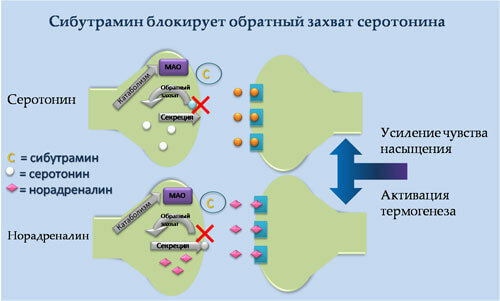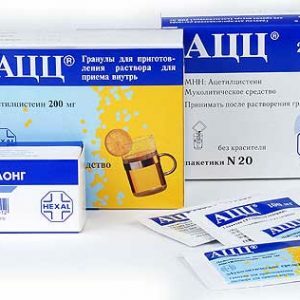Interferon
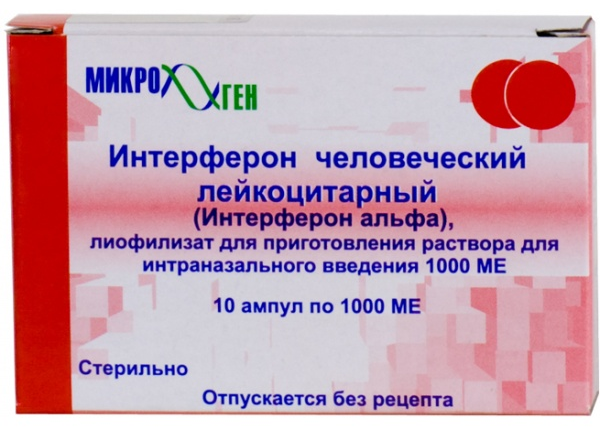
About the interferons in recent years, many people write and say.Sometimes they are credited with the properties of a panacea for various diseases, and sometimes they are considered unconfirmed by the fantasies of scientists.Let's try to understand what these drugs are, can and should be treated with their help.
Interferons are substances of a protein nature that have general protective properties.They are produced by the cells of the body in response to the introduction of pathogenic viruses.It is these proteins that are the natural barrier stopping the penetration of the virus into the human body.
Table of Contents: Who and When Has Interferon Interferon Interferon Interferon Interferon Interferon Interferon Interferon Interferon Interferon Medications Are there any contraindications to the use of interferons?Interferon use in children's practice Interferon inductorsWho and when opened interferon
YearThe discovery of interferon was recognized in 1957. British scientist virologist A. Isaac and his colleague from Switzerland Dr. D. Lindeman conducted experiments on mice infected with viral diseases.During the experiments, a strange pattern was observed - already sick with one type of mouse virus did not succumb to infection with other viruses.The phenomenon was called - interference( that is, natural protection).From this word the original name of interferons has occurred.
Over time, the interferons produced by human cells were divided into groups.The classification is based on the types of cells that secrete interferons.
So came:
- interferon( ITP) alpha( leukocyte, produced by leukocytes);
- interferon( ITP) beta( fibroblast, produced by connective tissue cells - fibroblasts);
- interferon( ITP) gamma( immune - produced by lymphocytes, macrophages and natural killers).

The main application in medicine is the alpha-interferon.They are involved in the treatment of most viral pathologies.ITF-beta is tested in the therapy of clinical manifestations of multiple sclerosis.
What is the effect of interferons
When ingested, pathogenic viruses penetrate into the cells, and begin an active reproductive process.The cellular structure, struck by the pathogenic origin, begins to produce interferons that act inside and go beyond it to transmit information to "neighbor" cells.Interferon is not capable of destroying viruses, its action is based on restraint of active reproduction of virus particles and their ability to move.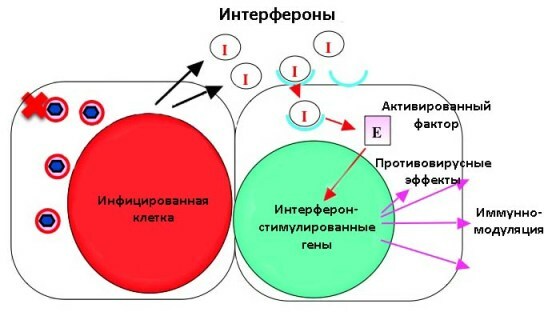
Mechanism of action of interferon:
- actively reduces the processes of virus synthesis;
- induces the activation of cellular enzymes of protein kinase R, and ribonuclease-L, which cause a delay in the production of protein molecules of the virus, and also cleave RNA in cells( including viruses);
- initiates the synthesis of the p53 protein, which has the ability to cause death of the affected cell.
As you can see, interferons are capable of destroying not only foreign viruses, but also the structure of human cells.
In addition to the harmful effect on the reproduction of viral bodies, interferons stimulate immune responses.Stimulation of cellular enzymes leads to antiviral activation of protective blood cells( T-helpers, macrophages, killers).
The activity and aggressiveness of interferons is very high.Sometimes one particle of interferon can fully ensure the cell's resistance to adverse effects of viruses, and also reduce their reproduction by 50%.
Please note: takes about 4 hours from the time of the initiation of interferon preparations to the level of full protection.
Of the concomitant effects, it should be noted the ability of ITP to suppress cells of malignant tumors.
About the mechanism of action of a medical preparation - Interferon the immunologist-allergologist, the employee of the Immunology Department of the RNIMU him.N.I. Pirogova Bella Bragvadze:
Methods for obtaining interferons, classification
For the preparation of interferon, the following methods are used:
- infection of human blood protection factors( lymphocytes, leukocytes) with certain safe virus strains.Then, the interferon released by the cells undergoes technological processing methods and is converted into a dosage form;
- gene construction( recombinant) - artificial cultivation of bacteria( most often E. coli), with the available gene of interferon in DNA.The patented name for interferon produced by this technique is Reaferon.
Note: production of "Reaferon" is much cheaper than leukocyte interferon, and the effectiveness may be greater. Recombinant interferon is used in the treatment of not only viral diseases.Based on the received information, we will single out the main types of interferon:
- Lymphoblastoid ITFs are derived from natural materials.
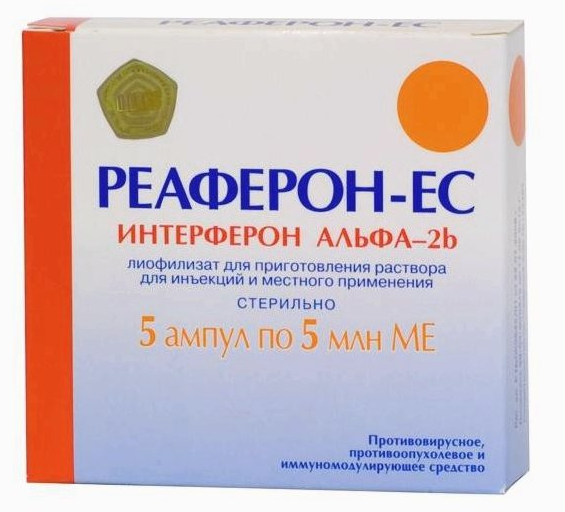
- Recombinant ITFs are synthetic analogues of human iterferons.
- Pegylated ITPs are synthesized together with polyethylene glycol, allowing interferons to act longer than usual.They have a stronger therapeutic effect.
When the use of interferon is required
The earlier the treatment with interferon is started, the better the result can be achieved.It is this pattern that is used for the prophylactic administration of these drugs.
Interferon is used in a complex of therapeutic measures for influenza, viral hepatitis, herpetic diseases, multiple sclerosis, malignant neoplasms, immunodeficiency states.
Note: leukocyte interferons are now almost useless due to possible side effects and instability of the formulation, as well as the high cost of producing the drug.
Forms of application of interferons
Because interferons are protein structures, they break down in the gastrointestinal tract, so the most optimal way of introducing them is parenteral( injections into the muscle).In this case, the drugs are absorbed almost completely and have the maximum effect.The distribution of medicinal products is not the same.Low concentrations of ITP are observed in the nervous system, tissues of the organs of vision.Medicines are excreted by the liver and kidneys.
The most commonly used dosage forms:
- interferon in candles,
- interferon in the form of drops in the nose,
- interferon in ampoules for injection.

Adverse effects of interferon treatment
The use of interferons at the beginning of treatment can provoke: a slight increase in temperature,
- ;
- pain in the muscles, eyeballs;
- weakness and heaviness in the body, a sense of weakness;
Early manifestations of side effects usually leave quickly and do not require additional treatment.
In later terms, the following can occur:
- decrease in the number of red blood cells, hemoglobin, platelets . There may also be the appearance of pathological forms of blood cells;
- sleep disorders, mood decay, convulsive twitching, headaches and dizziness, problems of consciousness;
- transient disorders of cerebral circulation;
- problems with eyesight( they are caused by problems in the vessels feeding the eyes, eye muscles and surrounding tissues);
- manifestation of cardiac arrhythmia, lowering of pressure, in some cases the development of myocardial infarction;
- different types of cough with symptoms of dyspnoea, pneumonia.A case of stopping breathing is described;
- pathology of the thyroid gland;
- skin rashes;
- problems with appetite, accompanied by nausea, unpleasant aftertaste, vomiting, sometimes the occurrence of gastrointestinal bleeding;
- appearance of hepatic transaminase activity( enzymes showing problems in the hepatic tissue);
- cases of hair loss.
Interferon preparations currently used
The modern pharmaceutical industry supplies a wide range of lymphoblastoid, recombinant and pegylated interferons to the domestic market:
- Lymphoblastoid:
- "Wellferon" - is prescribed for leukemia, viral hepatitis, kidney cancer and condylomatosis;
- Reaferon - similar to the action of Wellferon.It is used for viral and tumor pathologies.
- Recombinant:
- Laferobion.
- Roferon.
- Realdiron.
- Viferon.
- Grippferon.
- Genferon.
- Ingaron.
All recombinant drugs have found application in viral diseases, have become part of complex treatment of oncological problems, herpetic infections, herpes zoster, multiple sclerosis.
Produced in the form of sterile injectable solutions, ointments, drops for the nose and eyes.Each of the interferon preparations contains instructions for use.
For which diseases are the interferon preparations shown
Treatment of ITF is used for all conditions associated with interferon deficiency.
Most often these drugs are used when:
- influenza-parainfluenza infections, ARVI;
- acute hepatitis C;
- chronic hepatitis( B, C, D);
- immunodeficiency states.
Are there any contraindications for the appointment of interferons
Some conditions and diseases do not allow the use of ITF preparations.
Interferons should not be prescribed when:
- severe mental illness, convulsive conditions;
- for blood disorders;
- decompensated diseases of cardiovascular and respiratory systems;
- liver diseases that occur with severe form of cirrhosis;
- severe forms of diabetes mellitus;
In pregnancy and breastfeeding ITF is prescribed only in case of strict need or for vital indications.
Use of interferons in children's practice
Interferon for children up to one year is not used.In the older age, each drug is selected individually, depending on the age, condition and disease of the child.
The specifics of the use of interferon and other antiviral drugs for children in this video review are told by the pediatrician, Dr. Komarovsky:
Interferon Inductors
This group of drugs is not interferon, but it can stimulate the reactions of developing its own ITF.
Inductors began to be developed from the 70s of the last century, but they did not enter those years in clinical practice because of low efficiency and high toxicity leading to severe adverse reactions.At present, these problems are almost completely solved, and inductors have taken up their worthy niche in modern medicine.
There are two groups of interferon inducers:
- of natural origin( produced from yeast products and bacteriophages);
- synthetic( preparations of acridoneacetic acid and fluorenones).
Important: outside of Russia and other CIS countries, ITF inductors are not used because there is no evidence of their clinical effect.
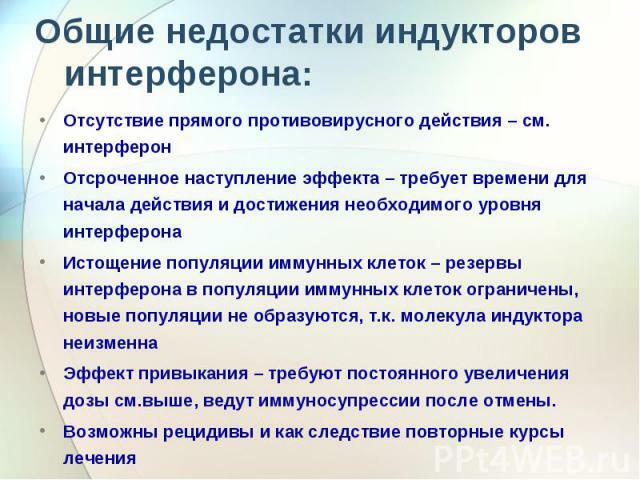
Currently, more than 10 drugs have been developed that have low antigenic properties, which greatly expanded the possibilities of their use.
The most significant interferon inducers are:
- Amiksin is the very first drug in this group.Produced in tablet form, has a long-lasting effect.Penetrates into the tissues of the brain, intestines and liver, which contributes to its use in various diseases.
- Neovir - has the ability to activate natural killers.Produced in ampoules for injections.It is used for viral hepatitis, influenza, and tumors.
- Cycloferon - enhances the isolation of all kinds of interferons in the body . Available in ampoules and as a soluble powder for injection.
It is prescribed for viral forms of liver inflammation, cytomegalovirus, tick-borne encephalitis, herpetic rashes.For this drug, drug regimens have been developed, tested in clinics. - Poluden( polyadenour) - found the main application in ophthalmology.It is prescribed for herpetic diseases of the eyes.
- Polygacyl- has good penetration capabilities in parenchymal tissues, also used in rabies.
- Kagocel-influences mainly on blood, spleen, liver, kidneys and organs containing lymphoid tissue.This feature allows you to use it for local viral lesions.
- Rogasin is a modern form of interferon inducers, effective against viral hepatitis and neoplasms.
Alexander Lotin, radiologist, narcologist

